When it comes to kitchen cabinets, durability and quality are key factors to consider. After all, you want your cabinets to last for years without experiencing any issues. That's where plywood kitchen cabinets come into play. In this article, we will explore the different types of plywood used for cabinets, the various grades available, and the best choices for your kitchen.
What Are Plywood Cabinets?
A plywood cabinet is a type of furniture primarily made of plywood sheets. Plywood is a building material created from hardwood or softwood lumber that is cut and treated to create thin sheets. These thin veneers or plies are then glued together, with the wood grain rotated to 90 degrees against each other to enhance strength.
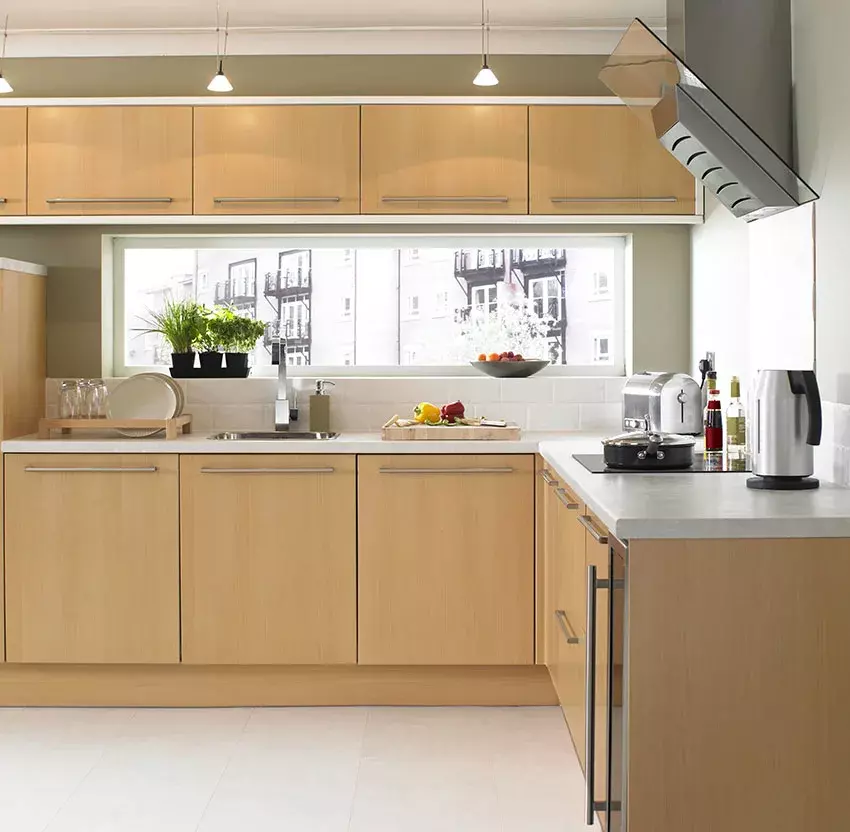 Caption: Kitchen interior with plywood cabinets
Caption: Kitchen interior with plywood cabinets
Plywood cabinets offer versatility and durability, making them a practical choice for various kitchen styles. Whether you prefer a modern aesthetic or a cozy country feel, plywood can easily adapt to your design preferences.
Types of Plywood for Cabinets
There are different types of plywood grades used for cabinets, each with its own characteristics. Here are some commonly used types:
Hardwood Plywood
Hardwood plywood is recommended for cabinet doors, as they are visually exposed and subjected to a lot of wear. Plywood made from dense wood grains like birch, oak, maple, and walnut can withstand constant opening and closing. Grade A hardwood plywood is an excellent option, as any defects are filled with synthetic fillers, resulting in a smooth surface perfect for painting or natural finishes. With its solid construction and 3 to 7 wood plies angled at 90 degrees, hardwood plywood ensures durability.
Softwood Plywood
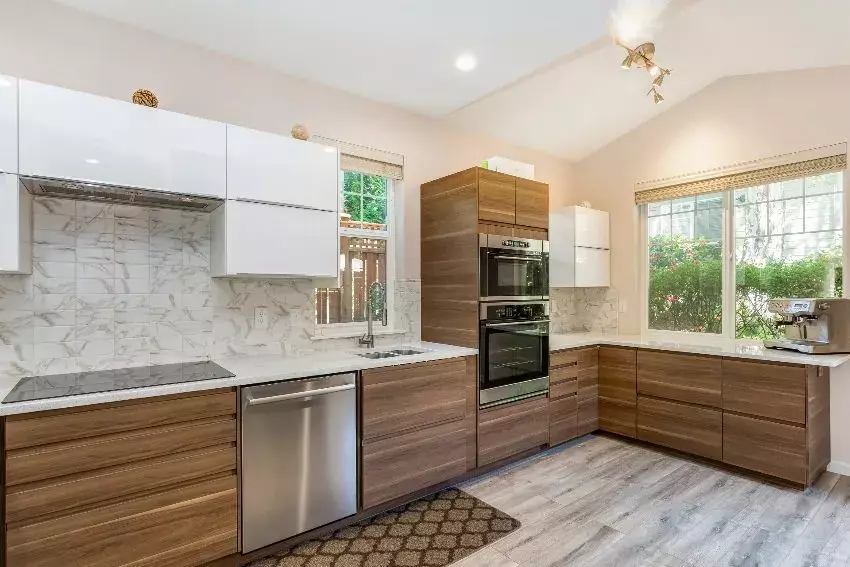 Caption: Kitchen interior with softwood plywood cabinets
Caption: Kitchen interior with softwood plywood cabinets
Softwood plywood, on the other hand, is lighter in weight and suitable for high vertical open shelving. It is typically made from spruce, cedar, or pine. However, it is not advisable for base cabinets or cabinets near the water sink due to its susceptibility to water damage.
Decorative Veneers
For doorless cabinets, decorative veneers provide a unique appeal. These cabinets have a thin slice of wood veneer, ranging from 1.6mm to 3mm in thickness, covering the surface. The decorative veneers ensure a sleek and smooth finish, making them an excellent choice for a distinctive look.
Structural Plywood
Structural plywood, also known as sheathing, is suitable for cabinet framing. It usually has a C or D grade and an unfinished surface. This type of plywood is more affordable and offers a strong and stable structure for your cabinets.
Plywood Grades for Cabinets
Grade A plywood is considered the best option for cabinets due to its cross-banded layering and smooth surface. The cross-banded layering provides resistance against bowing or arching, making it suitable for long-span shelves. Grade A plywood has minor defects that are filled with synthetic fillers, ensuring a sleek finish. It is perfect for cabinets that need painting or have a natural finish. Birch plywood, known for its durability, is a popular choice for grade A plywood.
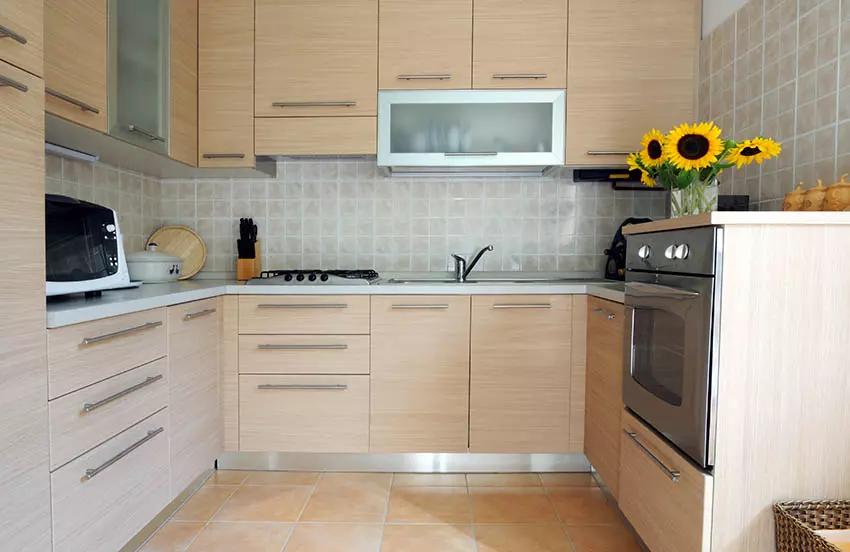 Caption: Kitchen with light-colored plywood cabinets
Caption: Kitchen with light-colored plywood cabinets
Other grades, such as grade B, C, and D, have varying levels of defects and are less suitable for high-quality cabinets. Grade B plywood has minor defects that can be easily repaired, while grade C and D have more noticeable flaws and knots, making them less desirable for cabinets.
When considering the back veneer of plywood, grade 1 is recommended for cabinets where the back might be visible, as it has a smooth and clean surface. Grades 2 and 3 have a few knotholes and repaired knots, making them suitable for cabinet backs or structural parts. Grade 4 is considered a reject grade, with numerous knotholes and repaired knots on the surface.
Cabinet Grade Plywood Thickness
Plywood thickness is an important consideration when building kitchen cabinets. Here are the commonly used thicknesses for different cabinet components:
-
1/2 inch Plywood for Cabinets: Primarily used for drawer sides and light wood materials. This thickness is suitable for small cabinets that are not subjected to heavy storage.
-
5/8 Plywood Cabinets: This thickness is ideal for base cabinets or horizontal crosspiece braces. It provides stability to cabinet sides and is less likely to warp or bend.
-
3/4 Cabinet Grade Plywood: The most cost-efficient thickness, 3/4-inch plywood is commonly used in cabinet structures. It is just 20% heavier than 5/8-inch plywood and is suitable for most kitchen cabinet constructions.
When it comes to cabinet doors, 3/4-inch plywood is recommended for maintaining a straight section and withstanding constant use. It doesn't require additional bracing or nailing and offers a sturdy option for cabinet doors.
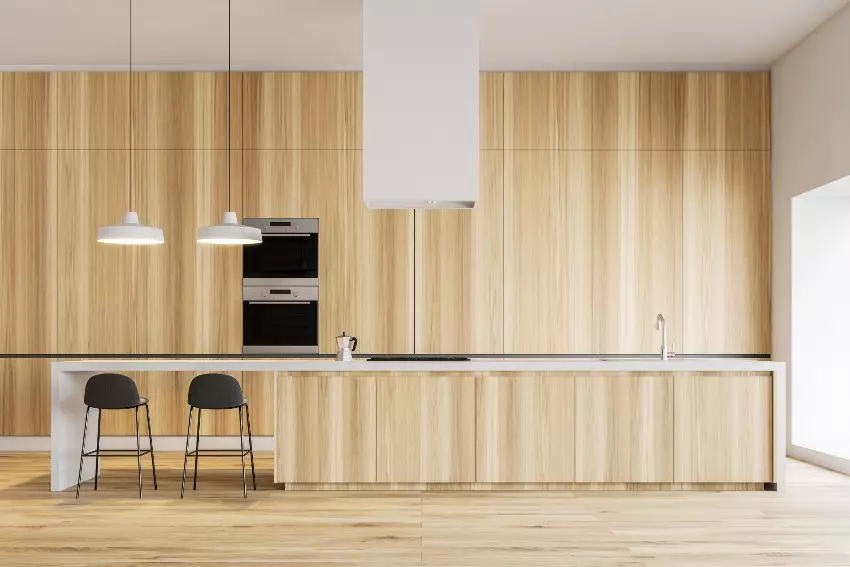 Caption: Spacious kitchen with plywood cabinets
Caption: Spacious kitchen with plywood cabinets
Best Plywood for Cabinets
When choosing plywood for your cabinets, consider using grade A plywood for the front face and number 1 for the back face. Hardwoods, like oak and birch, are excellent choices for durability and attractiveness. However, keep in mind that not all hardwoods take paint or varnish well. Oak, for example, has open graining that can be visible under paint. It's important to choose the right hardwood species that works well with your intended finishing.
Additionally, plywood thickness varies throughout different parts of the cabinet to ensure a cost-efficient construction. 1/4-inch plywood is suitable for cabinet backing, while 1/2-inch plywood is used for shelves that need to carry weight. 3/8-inch plywood is commonly used for drawer construction to maintain a reasonable weight for drawer contents.
Particle Board vs. Plywood Cabinets
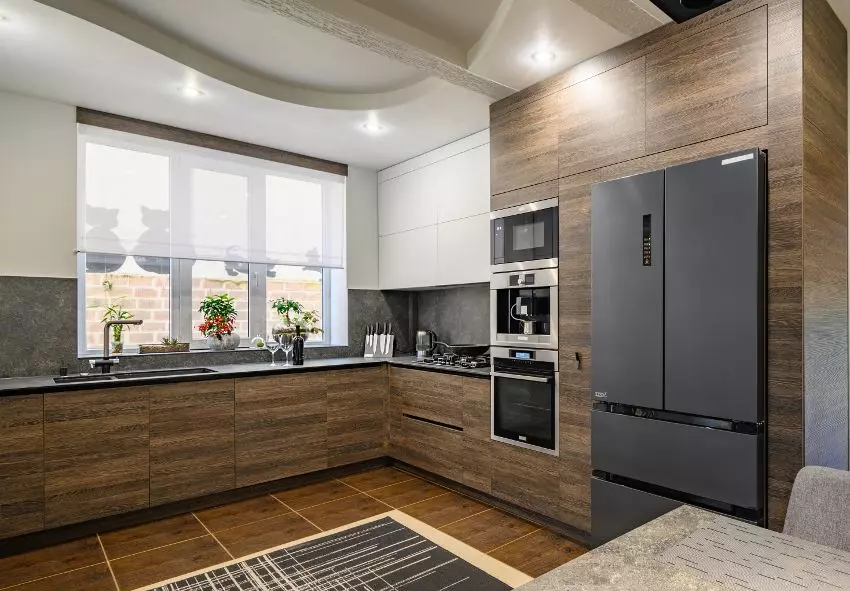 Caption: Kitchen with plywood cabinets
Caption: Kitchen with plywood cabinets
When it comes to cabinet materials, particle board and plywood are popular options. Let's take a look at their differences:
-
Composition and Strength: Plywood is made with layers of wood pilings covered with a veneer, while particle boards are made from wood chips bonded together with resin. Plywood offers a more durable structure with stronger adhesives, making it a sensible choice for kitchen cabinets.
-
Workability and Construction: Plywood allows for more design flexibility, as it can be easily assembled using nails, screws, or glue. Particle boards are less ideal for gluing or nailing.
-
Moisture Resistance: Plywood is generally more moisture resistant than particle board. While it doesn't withstand long-term water exposure, it maintains its structural integrity with minimal water contact. Particle boards, on the other hand, are susceptible to damage from moisture and can swell when exposed to water for an extended period.
-
Cost: Plywood is generally more expensive than particle boards, but it offers better durability and attractiveness.
-
Use: Particle boards are a cost-efficient quick fix, making them suitable for kitchens where cost is a significant factor. Plywood, on the other hand, is an excellent long-term option for cabinets that can withstand the test of time.
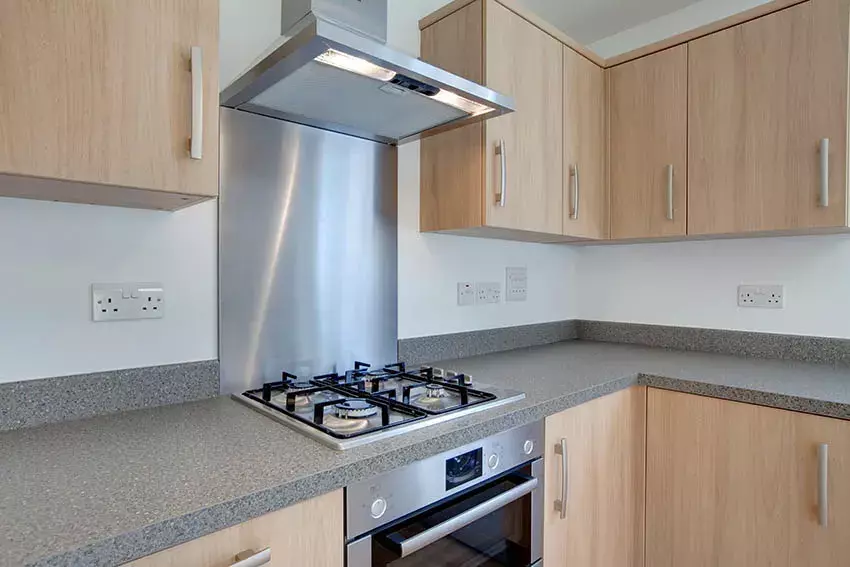 Caption: Kitchen with plywood cabinets
Caption: Kitchen with plywood cabinets
In conclusion, plywood kitchen cabinets offer durability, versatility, and a timeless aesthetic. With various types of plywood and grades available, you can choose the best option for your kitchen. Remember to consider factors such as wood species, thickness, and intended use when selecting plywood for your cabinets.

















